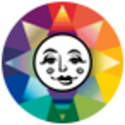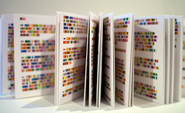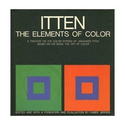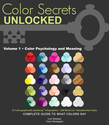-
About
- About Listly
- Community & Support
- Howto
- Chrome Extension
- Bookmarklet
- WordPress Plugin
- Listly Premium
- Privacy
- Terms
- DMCA Copyright
- © 2010-2025 Boomy Labs


 Lori Sawaya
Lori Sawaya
Listly by Lori Sawaya
Suggested reading for growing color knowledge. Add your favorites!

"The revelatory look at how our environment unconsciously yet dramatically shapes the judgments and decisions we make every day. In the late 1970s, scientists discovered that a particular color known as Baker Miller Pink calmed agitation. One researcher noted, "Even if a person tried to be angry or aggressive in the presence of pink, he can't. The heart muscles can't race fast enough. It's a tranquilizing color that saps your energy. Even the colorblind are tranquilized by pink rooms." The shade soon became known as "Drunk Tank Pink" in recognition of its tendency to sedate difficult prisoners."

By Ludwig Wittgenstein.
The principal theme is the features of different colours, of different kinds of colour (metallic colour, the colours of flames, etc.) and of luminosity--a theme which Wittgenstein treats in such a way as to destroy the traditional idea that colour is a simple and logically uniform kind of thing.

An Interdisciplinary Understanding of Color and Its Use as a Beneficial Element in the Design of the Architectural EnvironmentWritten primarily for professionals involved in the planning and design of public facilities, Color, Environment, and Human Response examines the properties and effects of color, and makes specific recommendations for the use of color in environments ranging from school gymnasiums to hospital EKG rooms to industrial foundries.The first part of this practical and useful guide discusses the psychological and physiological effects of color, light, and environmental conditions on the human organism.

"Joseph Albers, an artist and greatest educator in the United States, is one of those who first tore down the old hierarchical concept of color."-Yusuke Nakahara, Color Planning Center No. 59"Interaction of Color with its illuminating visual exercises and mind-bending optical illusions, remains an indispensable blueprint to the art of seeing.

Color Star Johannes has long been considered the definitive color theorist of the twentieth century. His books on color theory and application are standards throughout the world. Now his Color Star helps designers explore a myriad of harmonious colors. The Star consists of eight stencil like disks that can be placed over Itten's color wheel. Designers and artists can selectively examine the relationships of primary, secondary, and tertiary colors by using this unique system. Cool and warm values, complementary colors, and different hues and intensities can all be compared individually, as the designer uses the stencils to see the stencils to see only the wanted colors while masking the rest of the wheel. The Color Star is a useful and innovative tool for everyone who works with color, including students graphic designers, industrial designers, advertising designers, artists, illustrators, color theorists, interior designers, and architects.

"For readers wishing to expand their general understanding and appreciation of color and its perception, this is a fine book." (Journal of Pyrotechnics, Summer 2005)"A good addition to any library, this should be useful for the color interests of artists, designers, craftsmen, philosophers, psychologists, color technologies, and students in related fields."

Until now, the emotional impact of tints, tones, and shades has never been truly revealed. Offering the full color spectrum in Venn diagram style infographics, this book is an at-a-glance guide to connecting specific colors to targeted moods and messages.

by Janice Linsday
In this book Janice shares a lifetime of discoveries about why colour, something we think will be simple to use and understand, is so complex. She takes us on a journey that combines history, biology, and interior design with personal insights from years of helping others choose colour and get it right.
